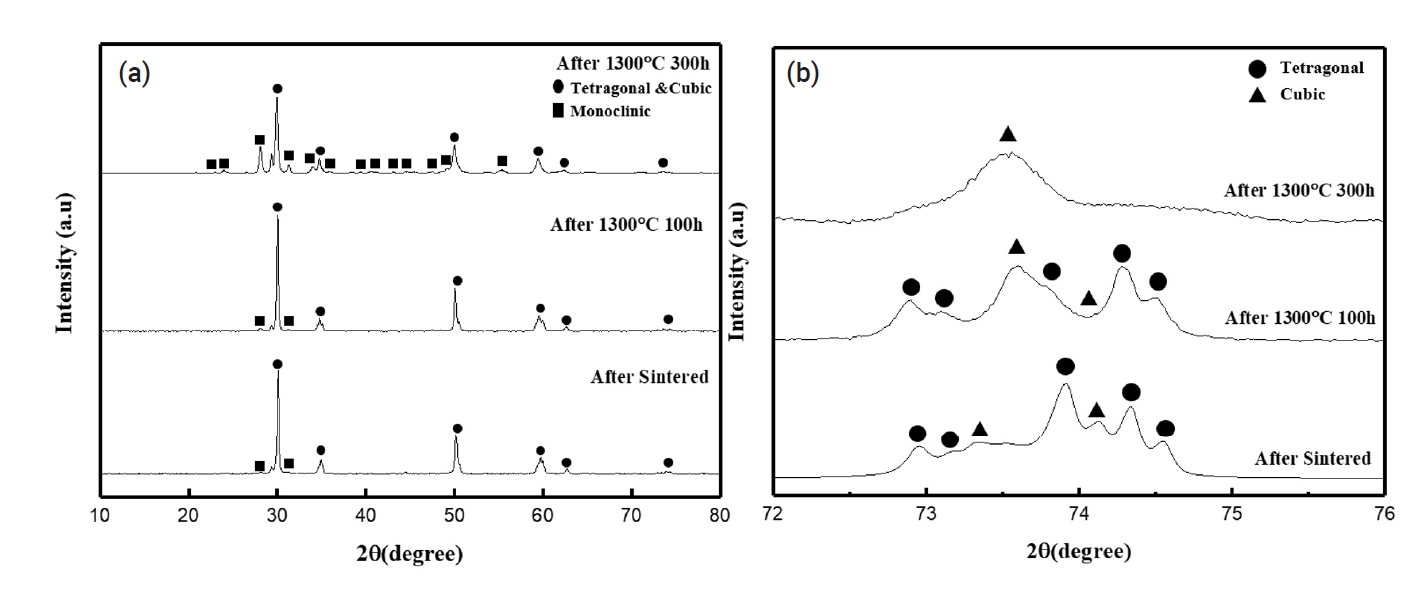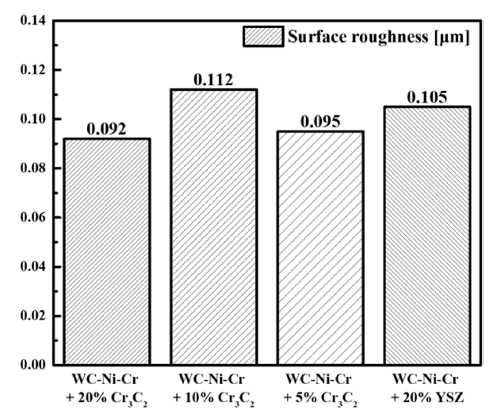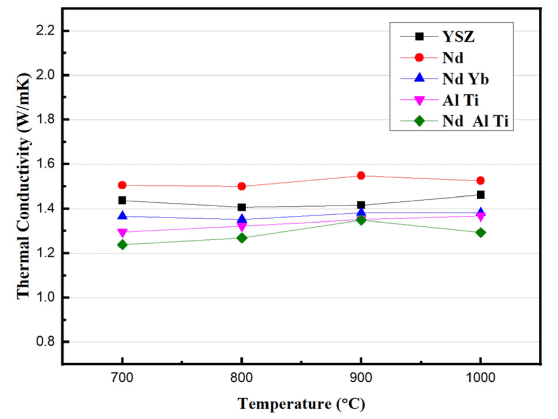Search
- Page Path
- HOME > Search
- [Korean]
- Effect of TiO2 Content on High-Temperature Degradation Behavior of Nd2O3 and Yb2O3 Doped YSZ Composite Materials
- Gye-Won Lee, Seonung Choi, Tae-jun Park, Jong-il Kim, In-hwan Lee, Yoon-seok Oh
- J Powder Mater. 2024;31(5):431-436. Published online October 31, 2024
- DOI: https://doi.org/10.4150/jpm.2024.00269

- 347 View
- 6 Download
-
 Abstract
Abstract
 PDF
PDF - Hot section components of gas turbines are exposed to a high operating temperature environment. To protect these components, thermal barrier coatings (TBC) are applied to their surfaces. Yttria-stabilized zirconia (YSZ), which is widely used as a TBC material, faces limitations at temperatures above 1200℃. To mitigate these issues, research has focused on adding lanthanide rare earth oxides and tetravalent oxides to prevent the phase-transformation of the monoclinic phase in zirconia. This study investigated the effects of varying TiO2 content in Nd2O3 and Yb2O3 co-doped YSZ composites. Increasing TiO2 content effectively suppressed formation of the monoclinic phase and increased the thermal degradation resistance compared to YSZ in environments over 1200℃. These findings will aid in developing more thermally stable and efficient TBC materials for application in high-temperature environments.
- [Korean]
- Tribological Behavior Analysis of WC-Ni-Cr + Cr3C2 and WC-Ni-Cr + YSZ Coatings Sprayed by HVOF
- Tae-Jun Park, Gye-Won Lee, Yoon-Suk Oh
- J Powder Mater. 2023;30(5):415-423. Published online October 1, 2023
- DOI: https://doi.org/10.4150/KPMI.2023.30.5.415

- 498 View
- 3 Download
-
 Abstract
Abstract
 PDF
PDF With the increasing attention to environmental pollution caused by particulate matter globally, the automotive industry has also become increasingly interested in particulate matter, especially particulate matter generated by automobile brake systems. Here, we designed a coating composition and analyzed its mechanical properties to reduce particulate matter generated by brake systems during braking of vehicles. We designed a composition to check the mechanical properties change by adding Cr3C2 and YSZ to the WC-Ni-Cr composite composition. Based on the designed composition, coating samples were manufactured, and the coating properties were analyzed by Vickers hardness and ball-on-disk tests. As a result of the experiments, we found that the hardness and friction coefficient of the coating increased as the amount of Cr3C2 added decreased. Furthermore, we found that the hardness of the coating layer decreased when YSZ was added at 20vol%, but the friction coefficient was higher than the composition with Cr3C2 addition.
- [Korean]
- Analysis of Monoclinic Phase Change and Microstructure According to High-temperature Heat Treatment of Oxide-doped YSZ
- Gye-Won Lee, Yong-Seok Choi, Chang-Woo Jeon, In-Hwan Lee, Yoon-Suk Oh
- J Powder Mater. 2022;29(6):468-476. Published online December 1, 2022
- DOI: https://doi.org/10.4150/KPMI.2022.29.6.468

- 789 View
- 5 Download
-
 Abstract
Abstract
 PDF
PDF Yttria-stabilized zirconia (YSZ) has a low thermal conductivity, high thermal expansion coefficient, and excellent mechanical properties; thus, it is used as a thermal barrier coating material for gas turbines. However, during long-time exposure of YSZ to temperatures of 1200°C or higher, a phase transformation accompanied by a volume change occurs, causing the YSZ coating layer to peel off. To solve this problem, YSZ has been doped with trivalent and tetravalent oxides to obtain coating materials with low thermal conductivity and suppressed phase transformation of zirconia. In this study, YSZ is doped with trivalent oxides, Nd2O3, Yb2O3, Al2O3, and tetravalent oxide, TiO2, and the thermal conductivity of the obtained materials is analyzed according to the composition; furthermore, the relative density change, microstructure change, and m-phase formation behavior are analyzed during long-time heat treatment at high temperatures.
TOP
 kpmi
kpmi

 First
First Prev
Prev


